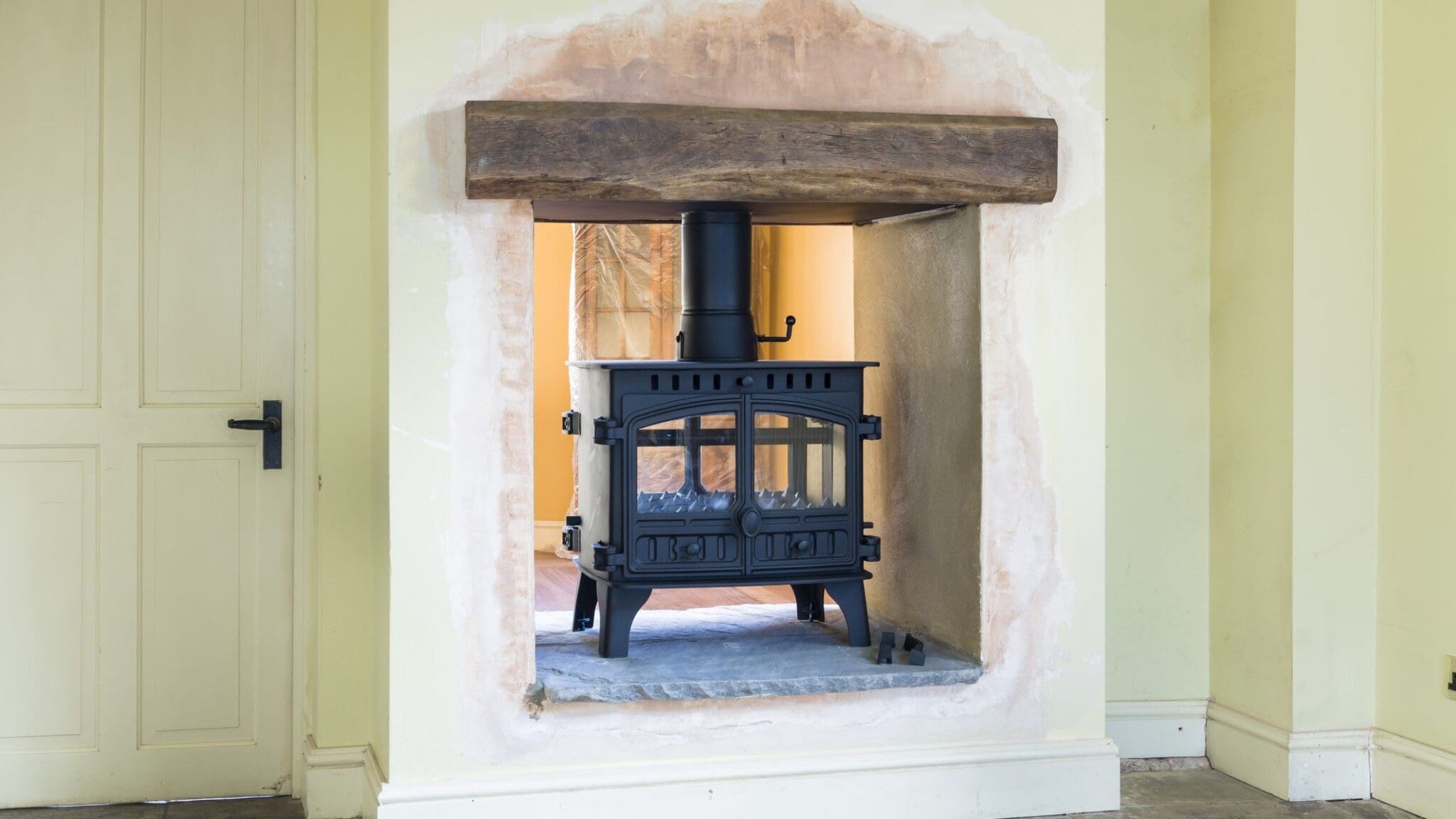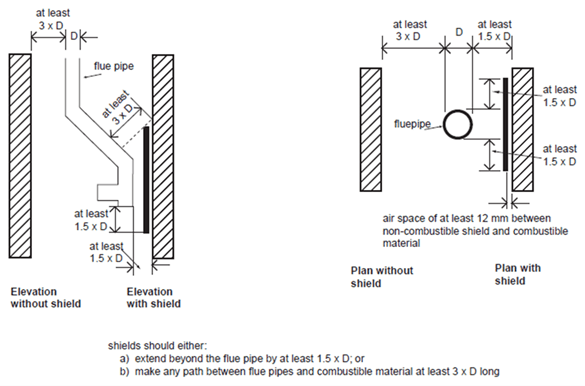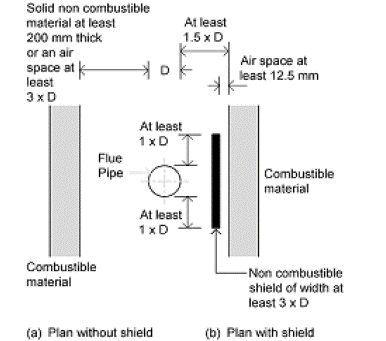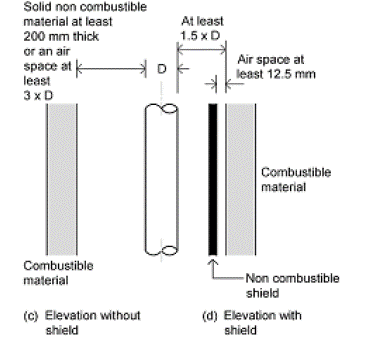OFTEC’s technical department is seeing an increase of solid fuel stoves being installed in fireplace recesses.
OFTEC’s technical department is seeing an increase of solid fuel stoves being installed in fireplace recesses.

OFTEC’s technical department is seeing an increase of solid fuel stoves being installed in fireplace recesses, where there are wooden lintels spanning the entire opening, or providing the structural support for the above chimney breast.
With this type of installation, consideration needs to be given to the minimum separation distances a connecting flue pipe can be installed to combustible material. This can be achieved in one of the following ways:



Alternatively, a twin wall system chimney could be used as the connecting fluepipe (check regional regulations on minimal designation), which will reduce the transmission of heat to combustible material, with the minimum distance denoted as ‘xx’ to combustible material as declared by the manufacturer.
Appliance manufacturers instructions also need to be adhered to ensure combustible material is located at the distance they specify to protect it from radiated heat.
Image credit: iStock with OFTEC diagrams
© 2025 Created by Euromedia Associates Ltd